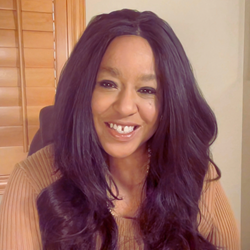Almost every higher education campus has a blue light box. They are tall blue poles that say “emergency,” and provide students, staff and visitors the ability to quickly alert authorities and campus officials in the event of an emergency.
There are many situations where a blue light box has and will be necessary, unfortunately. From overcrowded parties with inebriated students to violent attacks and even mass shootings, blue light boxes are a great tool for campuses. Still, they’re becoming less and less common — and some campuses are even opting to remove them.
The history of blue light boxes
After the tragic murder of Jeanne Clery at the University of Chicago in the 1980s, many campuses re-evaluated their student safety plans. While it’s not possible to keep every single person on campus safe at all times, the terrible crime did bring to light the need for additional precautions and access to emergency services.
In a pre-smartphone era, campuses began installing blue light boxes in multiple locations — especially in lower traffic areas as a way to keep those on campus safer.
By 2005, most secondary education campuses had installed emergency blue light boxes in at least one, and often multiple, locations.
However, over the next decade, many campuses discovered that these useful emergency tools were increasingly expensive to install and maintain and weren’t the perfect solution many assumed they would be.
In fact, in 2016, Indiana Daily Student reported that the university’s 56 emergency blue light call boxes had been used to make four legitimate calls in twenty years – two were fights, one was for a suspicious person, and one was for an injury in a parking lot.
They’re not the end-all-be-all to campus-wide safety.
The problem with blue light boxes
Unlike tools like the Rave AppArmor student safety app, blue light boxes are not portable, nor are they accessible to every student at all times. They require a student to physically near them, and then they must manually push the button. Plus, there are other issues blue light box installers didn’t expect:
1) Expensive maintenance
Blue light boxes cost around $20,000 to install and $1,000 per year to maintain. Especially at public institutions, which are already under the strain of tight budgets, this extra cost might be too much. When the boxes inevitably give out, there will be a secondary installation fee.
Conversely, portable safety apps like Rave AppArmor cost much less to maintain and install. Rather than paying a large fee yearly, campuses can pay smaller maintenance fees while giving every student access at all times.
2) Misuse of blue light boxes
Kids will be kids — and there are frequent instances of misuse of blue light emergency boxes. They’re used for prank calls, facility maintenance requests, and even open-door assistance.
- Of 508 blue light activations at the University of Florida between January 2017 and January 2019, only 14 (2.7%) required police action, and only one of these was an emergency.
- At the University of Central Florida – which has 260 emergency call boxes throughout its campus – 6% of activations required “assistance”, the majority for vehicle assistance.
- It was a similar story at the University of South Florida (90 boxes) and the University of West Florida (50 boxes), where less than 1% of blue light box activations required any action.
3) Low adoption
Additionally, the use of blue light boxes for emergencies has, statistically, been very low. In 2009, New Mexico State University actually removed its emergency phones due to low use.
Two years later, the University of California Davis replaced 107 blue light call phones with 18 keypad phones due to low utilization; and, in 2017, the University of Nebraska at Lincoln removed nearly 100 emergency blue light call boxes, which had cost the university $1.7 million over 15 years.
The removal of emergency blue lights prompted several minor protests, but research into their utilization found the boxes were rarely used for their intended purpose and were more a symbol of security.
Unfortunately, fewer blue light boxes decrease on-campus safety for students and faculty. Despite the low use or misuse, there were still instances where the blue light boxes had been necessary and even life-saving.
The question is: How can campuses increase safety, extend security, and reduce costs?
Blue light box alternatives for all students & staff
At Motorola Solutions, we wholeheartedly believe that every student and faculty member deserves to feel safe on campus.
Rave Panic Button gives students a portable emergency alert system. No matter where they are on campus, if a student or faculty member feels like their safety is in danger, they have the panic button available.
It provides users with one-push activation for any type of emergency, which initiates fast response and real-time collaboration with 9-1-1 and on-site personnel. Rather than a general location and a call box, our emergency notification solutions also offer enriched data for 9-1-1 and first responders, including device location, facility information and type of activation.
Best of all, Rave AppArmor and Rave Panic Button are easily integrated with emergency systems. In the event of an active shooter or another emergency event, faculty could broadcast to and trigger additional channels like desktop alerts, digital signage, video systems, access controls, websites, sirens and any IoT-ready device.
Two-way communication is also possible, including live-streaming video and status checks of those involved to go beyond generic 9-1-1 calls.
If you want to increase safety on your campus or provide students with more safety coverage than a blue light box alone, explore the Rave Mobile Safety Suite.





Comments are closed here.